Key takeaways:
- Responsive design significantly enhances user experience across devices.
- SEO is crucial for site visibility; keyword research and optimizing on-page elements are vital strategies.
- Patience is essential in SEO; long-term consistent efforts yield better results than expecting immediate gains.
- Balancing SEO techniques with user experience is key to reducing bounce rates and improving site engagement.
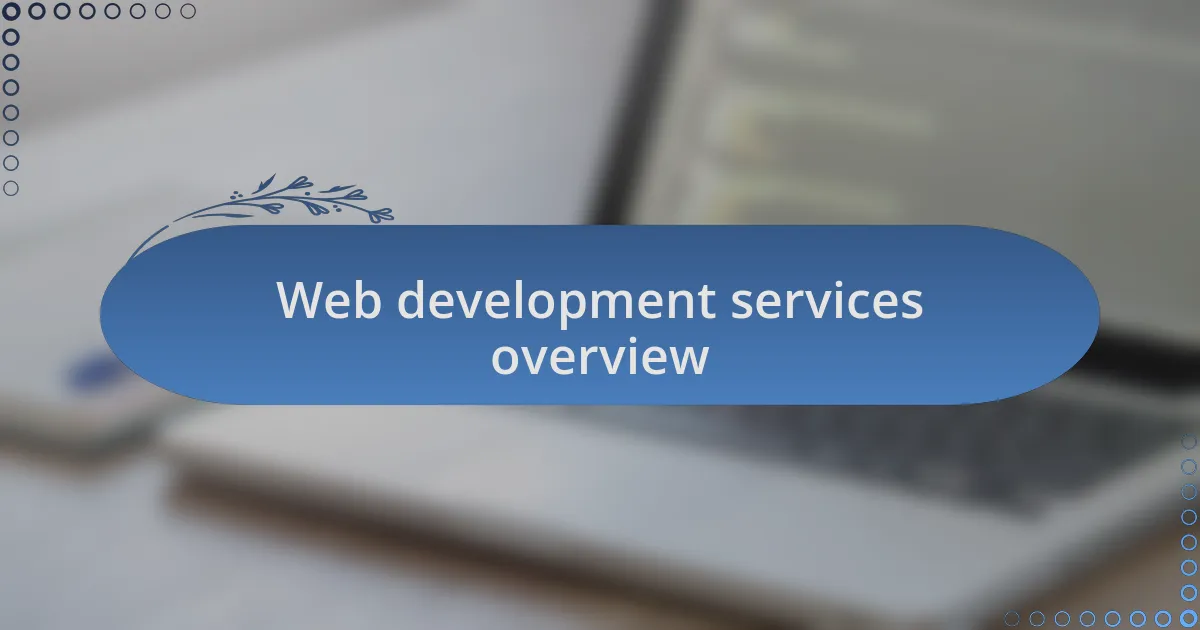
Web development services overview
When I think about web development services, I often reflect on the incredible range of options available today. From simple static websites to complex dynamic applications, the choices can be overwhelming. Isn’t it fascinating how one decision can significantly affect user experience and site performance?
In my own journey, I have experienced firsthand the impact of responsive design. When I developed my first mobile-friendly site, I was amazed at how much better it performed compared to its desktop-only counterpart. It was a wake-up call for me: if businesses want to thrive online, they must cater to users across all devices—how else can they truly connect with their audience?
Moreover, I’ve learned the importance of SEO in web development. While building a site that looks good is essential, ensuring it ranks well on search engines can make all the difference. I remember optimizing my content for keywords and feeling that surge of excitement when traffic began to grow. It’s a reminder that functionality and visibility must go hand in hand for a website to achieve its full potential.
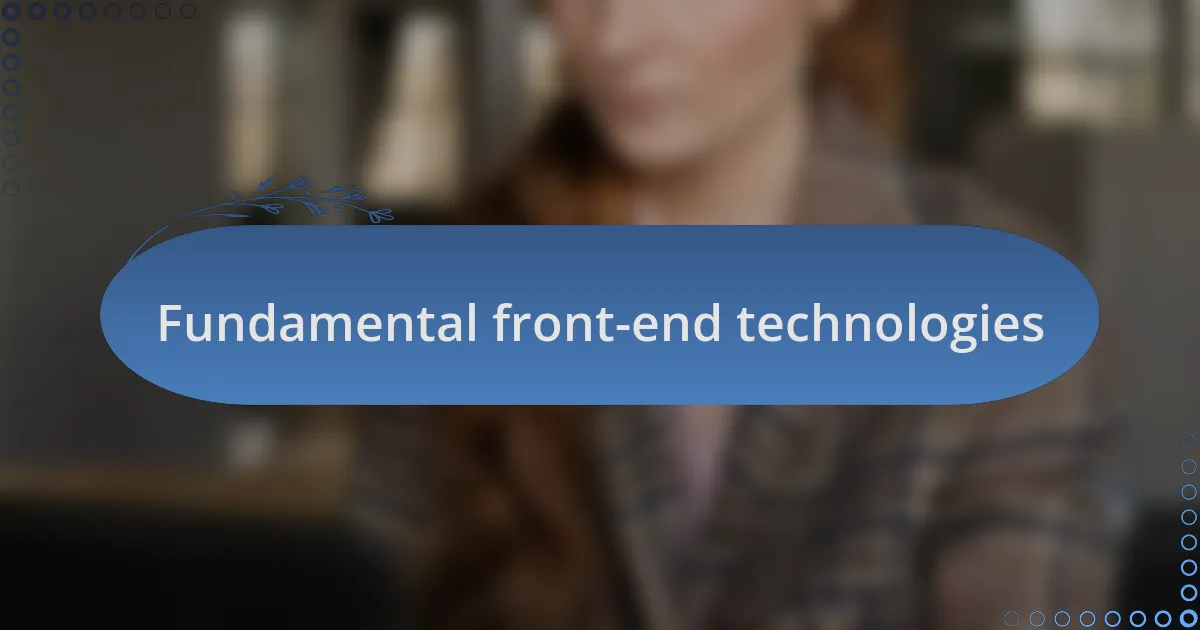
Fundamental front-end technologies
When discussing fundamental front-end technologies, I cannot overlook HTML, CSS, and JavaScript. Each plays a unique role in shaping how users interact with a website. I remember the first time I embedded a simple JavaScript function; seeing the webpage come alive with dynamic elements was exhilarating—it felt like magic.
CSS, in particular, has transformed my approach to design. Experimenting with flexbox layouts not only made my sites more responsive but also allowed for incredibly creative freedom. Has there ever been a moment when you saw a design come together perfectly? For me, it was like piecing together a puzzle, where each rule added clarity to the overall aesthetic.
HTML forms the backbone of any webpage. I’ve had many moments where designing a form for user input seemed daunting, yet I found that simplicity often delivers the best user experience. I learned that every form element should have a purpose—after all, if users can’t fill out a form easily, what’s the point in building one? Each interaction can either build trust or lead to frustration, and understanding that has been a game-changer in my web development journey.
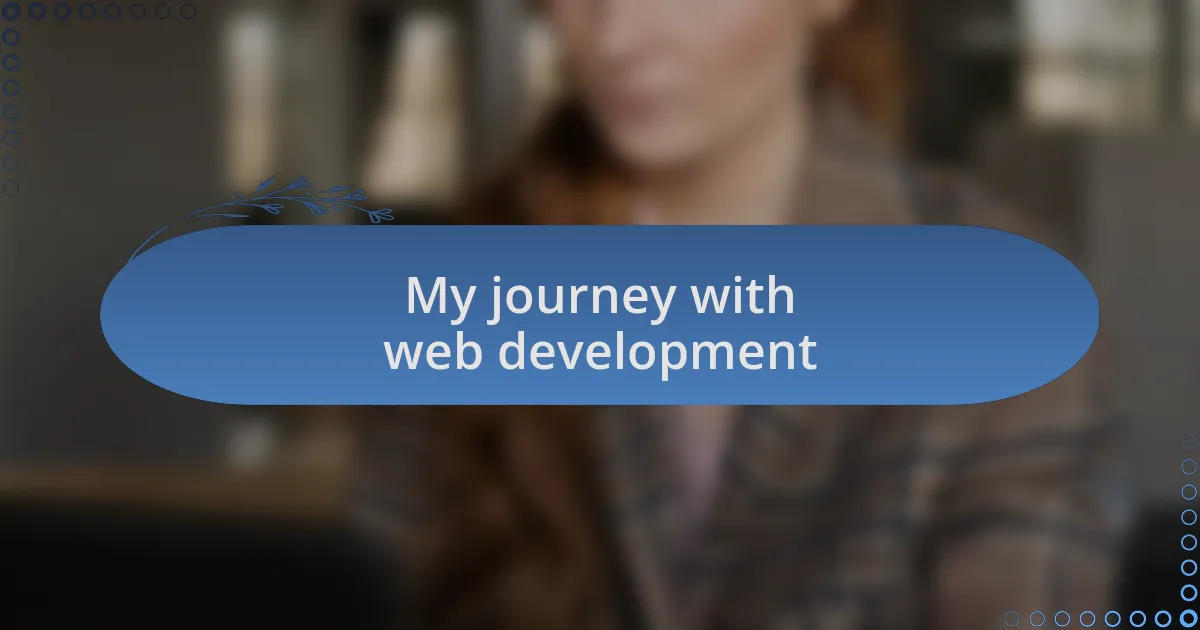
My journey with web development
My journey with web development began on a whim. I remember sitting at my computer, exploring a basic tutorial on building my first webpage. With each line of code, I felt a surge of excitement, like I was unlocking secrets to an entirely new world. It was empowering, and I couldn’t help but ponder: what if I could turn this skill into a career?
As I delved deeper, the community around web development became a vital part of my experience. Attending local meetups and connecting with fellow developers opened my eyes to different approaches and innovations. I still recall how a small group brainstorming session spurred me to rethink my architecture choices. Engaging with others not only broadened my technical skills but also ignited a passion for collaborative problem-solving that still drives me today.
Over time, I grew to appreciate the importance of not just building, but also understanding the user experience. There was a defining moment when a user reached out to me about a navigation issue on one of my sites. I felt a mix of frustration and determination to fix the problem. That incident reminded me that behind every line of code, there is a user. Striving to improve their journey has since guided my work, enhancing both my projects and my empathy for the end-user experience.
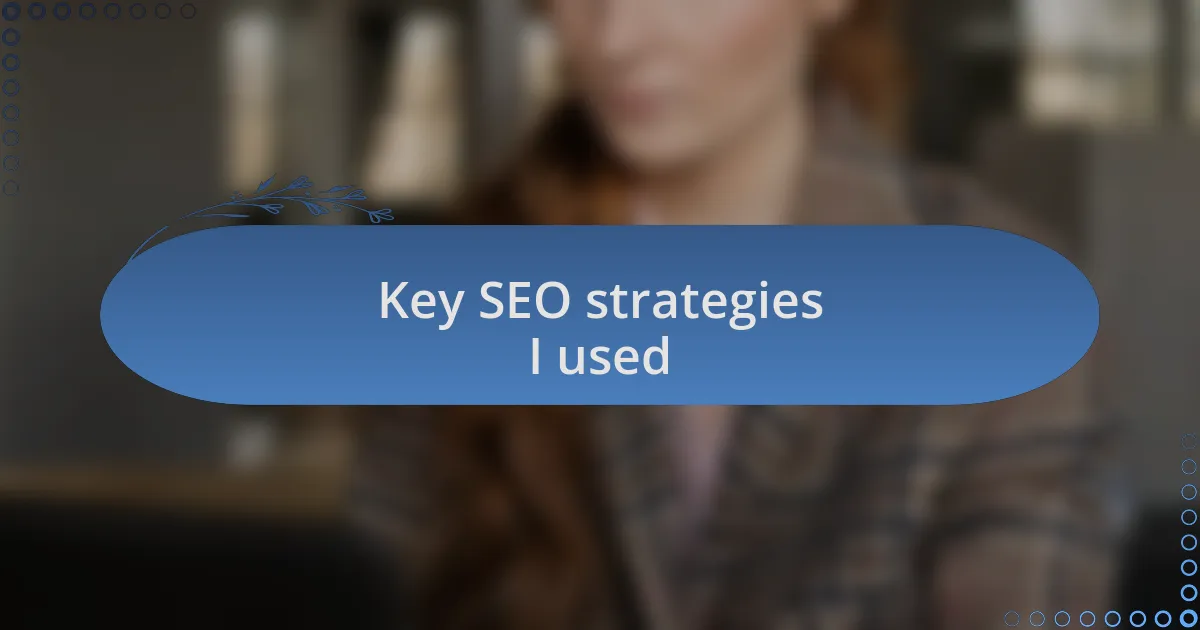
Key SEO strategies I used
One key SEO strategy that I found particularly valuable was keyword research. Initially, I treated it as a side task, but I quickly discovered its potential. I recall spending hours using tools like Google Keyword Planner to identify the specific terms users were searching for. It was gratifying to see traffic increase as I began to incorporate these keywords into my content. Have you ever noticed how the right words can completely shift a site’s visibility?
Another critical aspect of my approach was optimizing on-page elements. I paid meticulous attention to title tags, meta descriptions, and headers. I remember the excitement of tweaking a title and seeing a significant uptick in click-through rates shortly after. It felt like a lightbulb moment—those small adjustments made a considerable difference. Have you ever experienced that rush when data reflects the impact of your hard work?
Building a diverse backlink profile emerged as a game-changer in my SEO journey. I made it a point to reach out to fellow developers and bloggers for guest posting opportunities. One memorable collaboration was with a tech blog that shared my article, resulting in a noticeable surge in both traffic and authority. It taught me that while creating quality content is essential, connections within the industry can amplify your reach more than you might expect. How often do you consider the power of partnerships in your own projects?
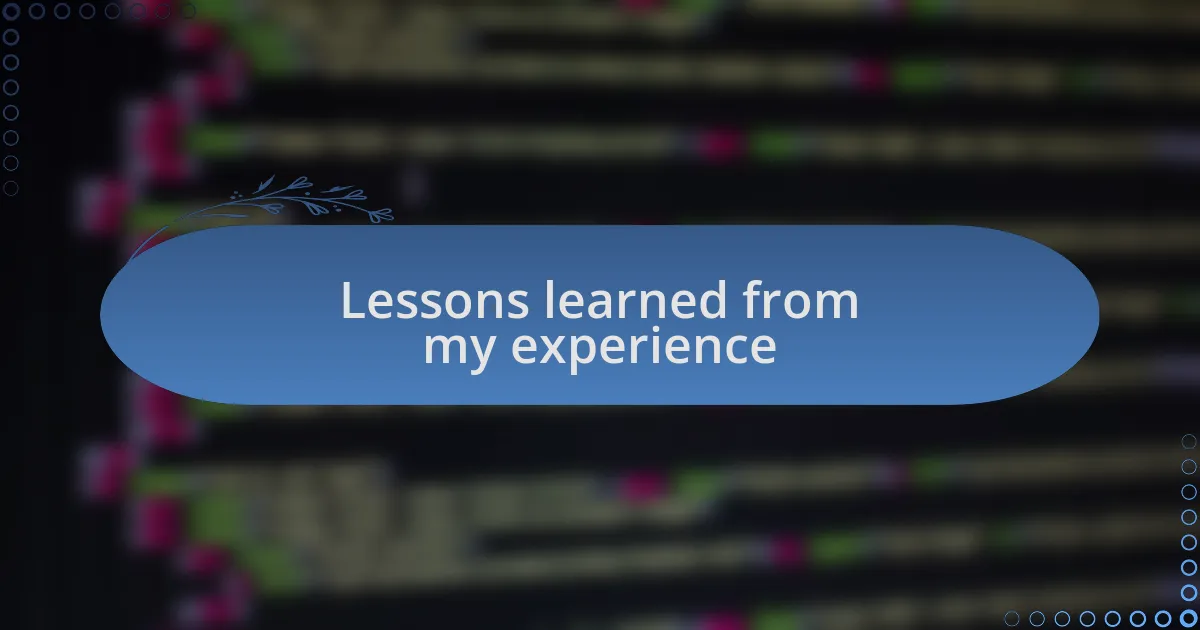
Lessons learned from my experience
One of the biggest lessons I learned was the importance of patience in SEO. In my early days, I expected immediate results after implementing changes. I remember refreshing my analytics data daily, hoping for a spike in traffic, only to feel disheartened when nothing happened. This experience taught me that SEO is more like a marathon than a sprint; consistent effort over time truly pays off.
Another significant realization was understanding that SEO isn’t just about ranking high—it’s about the user experience. I once revamped a website without considering how real users would navigate it. After rolling out the changes, I quickly noticed a rise in bounce rates and user frustration in feedback. This taught me that optimizing for search engines should never overshadow the need for a seamless and enjoyable visitor experience. How do you balance SEO techniques with user experience in your own projects?
Finally, I discovered the value of analytics tools in shaping my strategy. Early on, I relied heavily on instinct and intuition instead of data. I vividly recall one instance where I overlooked a high-performing blog post, simply because I assumed it was just luck. When I finally dove into the analytics, I realized it was a goldmine of insights. This experience highlighted to me that data isn’t just numbers—it’s a story waiting to be uncovered, a guide that can lead you towards better decisions. Have you ever found unexpected gems in your own data analysis?